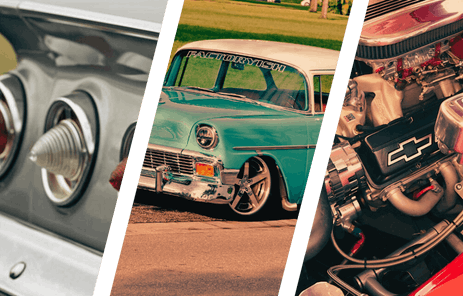
Speedway Motor’s founder, “Speedy” Bill Smith and wife Joyce have a deep personal involvement in racing and hot rodding extending for more than six decades. Their lifelong passion for collecting and preserving historic automotive artifacts culminated in the founding of the Smith Collection Museum of American Speed in 1992.
The Museum of American Speed is dedicated to preserving, interpreting and displaying physical items significant in racing and automotive history.
Millions of hours have been spent, as Speedy Bill says, “turning over rocks and chasing countless leads to assemble a collection of this magnitude.” As a result, museum visitors can witness a stunning array of history-making cars, engines, parts, toys and memorabilia. You’ll see countless rare and one-of-a-kind items, all presented in beautiful displays and dioramas.
Recently, the Smith Collection Museum of American Speed highlighted Chevrolet’s first V8 engine, a 1918 Chevy V8.
The Chevrolet Series D, V8 internal combustion engine was a liquid-cooled, 288cid, designed and built by Chevrolet Motor Car Company in 1917. As part of the merger into General Motors in 1917, the engine was produced by General Motors Company’s new Chevrolet Division in 1917 and 1918.
This was Chevrolet’s’s first V8 and the first overhead-valve V8. Chevrolet wouldn’t make another V8 until the debut of the iconic SBC in 1955.
It was capable of producing 36 hp @ 2700 rpm. The design had an exposed valvetrain with nickel-plated rocker cover, an aluminum water-cooled intake manifold, the starter is in the valley, as is the gear driven generator with the fan clutch coming off of it. The gear driven generator was designed to run the distributor as well. The belt in the front only drove the water pump.
Advanced for its time, a central camshaft operated the vertical overhead valves in both cylinder banks. It had a 50 pound flywheel and a counter balanced crankshaft that rode on three main bearings.
After merging with General Motors in 1918, the Chevrolet division discontinued the V8 to concentrate on economy cars.
You might also like
Cheap Aluminum Heads Put To The Test: Are They Worth It?
Jim’s Automotive Machine Shop evaluates cheap aluminum SBC heads, revealing the machine work needed to make budget castings usable.


